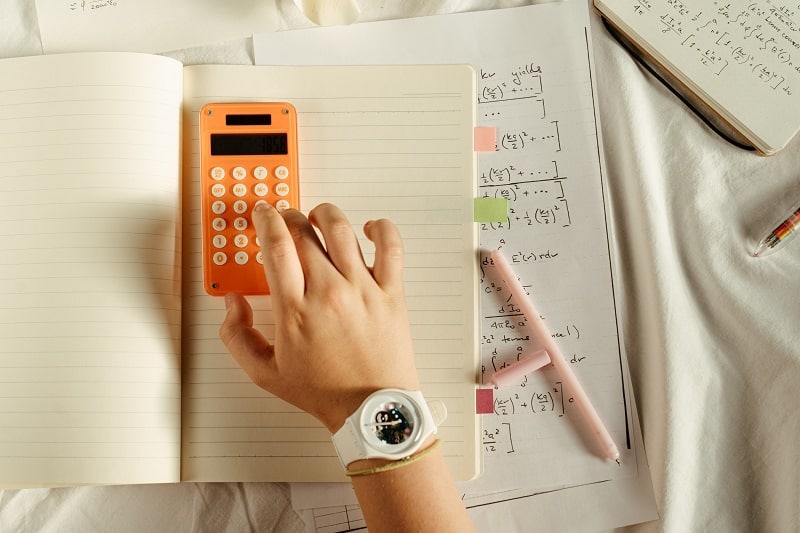
Preparing for the CLEP Precalculus Test: Your Ultimate Guide
The CLEP College Pre-Calculus exam assesses students’ ability to use precalculus and respond to data in a way reflected in precalculus. The practice test is the best way to prepare for the test. Even if the exam seems daunting now, once you use the practice test, you will be ready to ace the exam in no time.
The practice test breaks down the simulation exams into two main portions. Each practice test also has two full practice tests to help you receive the highest score possible when it is time to take the real test.
Table of Contents
What Is The Format Of The CLEP Precalculus Test?
As mentioned above, the CLEP practice test resembles a real CLEP test, meaning you will see the sections broken down into two parts. Section one asks for test-takers to answer 25 questions in 50 minutes with the aid of a calculator. That is two minutes per question.
The second section of the test does not allow calculators and asks test-takers 23 questions in 40 minutes which is a little over a minute and a half for each question. Each section is made up of less complicated math problems and math problems that require more effort and skill to solve.
The grand total comes out to test-takers answering 48 questions in 90 minutes.
What Is On The CLEP Precalculus Test?
Now, let’s take a deeper look at the kinds of questions asked on the practice test.
The entire test has six separate categories of questions.
1. Algebraic, Expressions, and Equalities
This section makes up 20% of the test, with nine questions throughout the exam. Questions range from problems about equations and inequalities, including, but not limited to, quadratics, polynomials, logarithms, and absolute value equations.
You need to demonstrate your capability of solving algebraic equations and problems as well as solving linear and nonlinear equations.
Let’s take a look at a polynomial equation. A polynomial is an expression of coefficients that uses PEMDAS– parentheses, exponents, multiplication, division, addition, and subtraction to find the value of the variables. Polynomials are made of numbers and letters.
Sample question:
Solve 2x+1=3.
To start this question, we can assess the information we already know. We know that 1 equals 1, and 2x + 1 must equal 3. This is a simple polynomial equation, so we can see that 2 times 1 equals 2+ 1 is 3. The answer to x is 1.
2. Functions: Concept, Properties, and Operations
This section makes up 15% of the test with around eight problems. You have to prove your knowledge of functions, including definitions, features, domain, range, and notation.
Also, you need to be able to answer equations and solve information about functions with your knowledge of functions. This can include solving inverses and finding zeroes within the function.
Functions are one of the roots of precalculus. In simple terms, functions provide rules or laws that answer relationship questions between an independent variable and a dependent variable. Some information you have to solve when solving a function problem is the domain and range of the function.
The domain is the sequence of values that can be plugged into the function’s equation. Or the x values in a pattern of a function where f(x). The range is the sequence of values we get when we attempt to solve the equation. The domain is what fills in the equation, and the range is what comes out when the equation is solved.
That is the basic definition of domains and ranges when related to functions, but if you can carry that information with you even to the most difficult problems, you will be able to solve the question if you get stuck.
3. Representations of Functions: Symbolic, Graphical, and Tabular
This section makes up 30% of the test with 15 questions. You have to demonstrate your ability to solve information about symbolic, graphical, and tabular functions, condense information based on the functions, and understand function fundamentals.
You must recognize all kinds of functions, including:
- Quadratic
- Linear
- Square root
- Absolute value
- Polynomial
- Rational
- Exponential
- Trigonometric
- Inverse trigonometric
- And more
Square root functions mean that the output value is equal to the square root of whatever value was inputted at the start of the equation. This kind of function can be a bit easier to solve because if you ever get stuck, you can plug in information to find the square root.
Linear functions are probably the easiest functions to plot on graphs and charts because linear means a line. So, when you are solving for x with a linear equation, you will come up with a line. That line might not be perfectly horizontal or vertical, but if you follow the equation, you will find each plot point is evenly spaced out from the next.
Absolute value means what it sounds like. The value of something without any fancy signs or notations around it. So, if you have -3, the absolute value of that is just 3. If you find absolute value notation in a function equation, just pay attention to the equation.
These are easy to slip up on. Read every part of the equation thoroughly, and make sure to double or triple-check your work before turning in your test.
4. Analytic Geometry
This section makes up 10% of the test with either four or five problems. It measures your knowledge of geometric shapes and symbols such as parabolas, lines, circles, and ellipses.
A parabola is one of the basic assets in geometry. A parabola is a curve on a chart or diagram that moves upward or downwards in a U shape. Based on the equation and the function, the parabola might be narrow or extremely wide. The highest or lowest point on a parabola is known as the vertex and that is what you can build your parabola from.
An ellipsis is similar to a parabola but a tad bit different. An ellipsis is a curve around two focal points rather than just one. It is like you drew the same parabola on both ends of a vertex. These are fixed points that are constant, and you have the same amount of space from each end to each vertex.
5. Functions as Models
This section makes up 10% of the test with either four or five problems. For this portion of the test, you have to showcase your knowledge of the difference between the three kinds of graphs used in functions. If you can separate tabular from graphical, symbolic, and verbal, you will be set to ace these questions.
For this portion of the test, you have to know the differences between tabular, graphic, symbolic, and verbal functions.
- Tabular functions are formatted in tables. So, instead of having an equation written out in a straight line, you will see a bunch of data condensed into a table. You will read each value of the function, x, and y boxes, and you will input and translate that information into the function.
- Graphic appears in a curve and has a distinct formula to get to the curve. It uses real numbers and is usually appearing in a linear fashion.
- Symbolic functions use various symbols to represent an equation. It can include multiple values for x and y as well as several derivatives of f. These functions follow specific rules related to each equation. Make sure to read the questions carefully and take note of all information.
- Verbal functions can be described with verbal cues. Verbally share the rule for the equation, function, and known values before solving the equation.
6. Trigonometry and Its Applications
This section makes up 15% of the test with about seven questions. You need to prove your grasp of trigonometry in relation to ideas like ratios and identities, and inverses.
A large portion of the test quizzes its test-takers on assets of trigonometry, so knowing how to digest the information, respond to it, and solve questions about it guarantees success on the CLEP test.
Inverse functions are usually prevalent in triangles. To find out the cotangent, secant, and cosecant values of a triangle, you will use inverse functions.
How Can You Prepare For The CLEP Test?
You might have a grasp on your precalculus skills, but if you don’t know how the test format goes, you might have a more difficult time finishing the test or answering the questions correctly. To avoid those mistakes, you can invest in TestPrep-Online’s helpful study guide and practice test packets.
You will receive multiple practice tests complete with in-depth answer explanations and answer guides that explain how to solve questions, what you answered correctly, parts you answered incorrectly, as well as how to improve your answer for the next time you are faced with a similar question.
After you complete the practice tests, you can review your work and study the problems that gave you difficulty. Take note of the subjects that are more difficult for you, so you don’t waste time studying information you already know.
You can review and study your precalculus lessons from school and take notes of the subjects that trip you up, make you stuck, and those that come easier to you.
Spend more time on the topics that confuse you to ensure success on the exam.
Ace Your CLEP Precalculus Test Today
Now that you know the six sections that make up the CLEP test, practicing for the exam should be a lot easier and less stress-inducing.
You can prioritize studying the sections that give you the most difficulty on exams and leave the easier sections for the test.
With TestPrep-Online’s online guides and practice tests, and full in-depth answer walkthroughs, you will be acing this exam in no time!
Sarah is an accomplished educator, researcher and author in the field of testing and assessment. She has worked with various educational institutions and organisations to develop innovative evaluation methods and enhance student learning. Sarah has published numerous articles and books on assessment and learning. Her passion for promoting equity and fairness in the education system fuels her commitment to sharing insights and best practices with educators and policymakers around the world.








